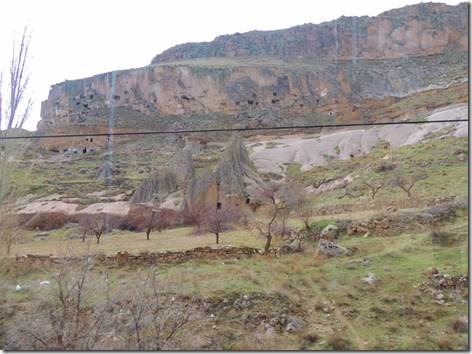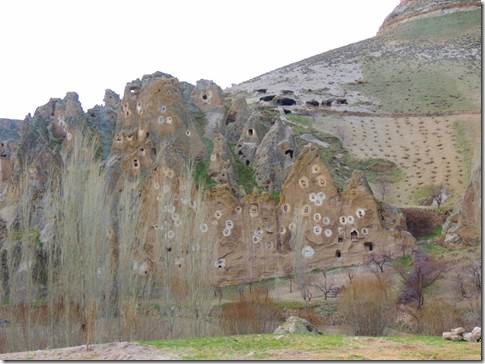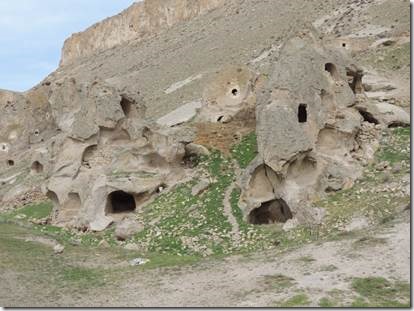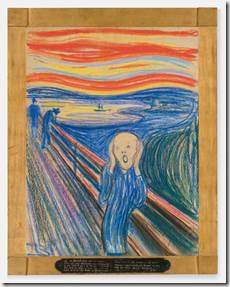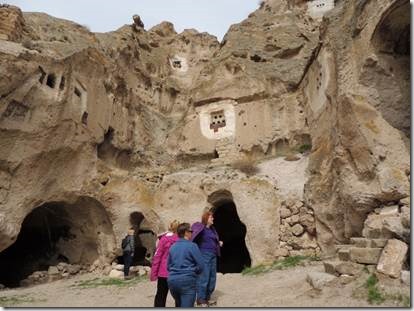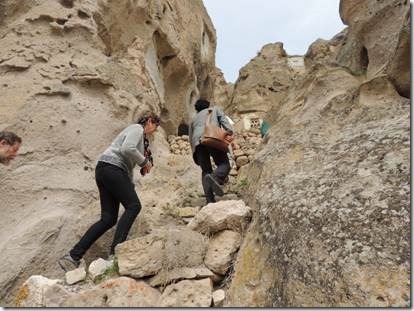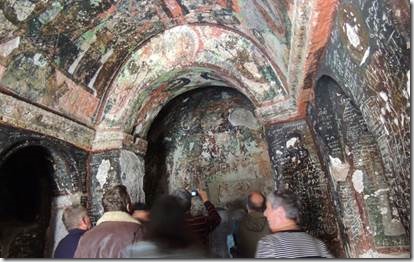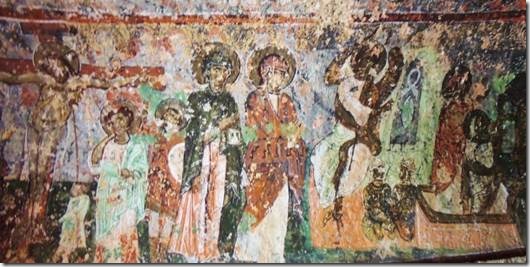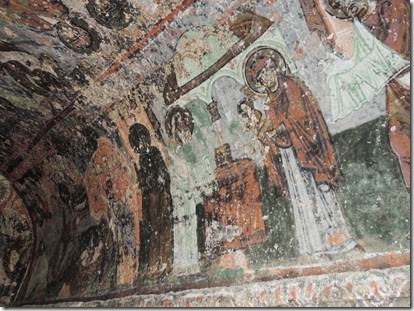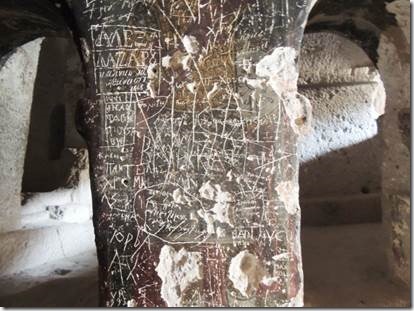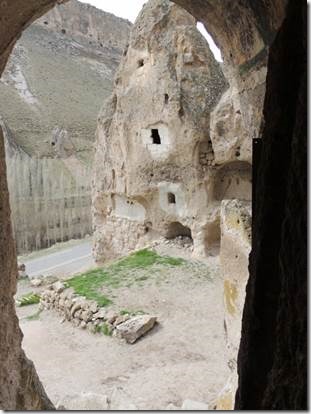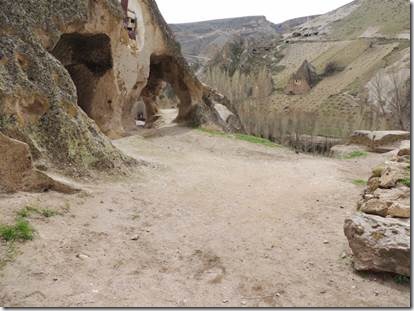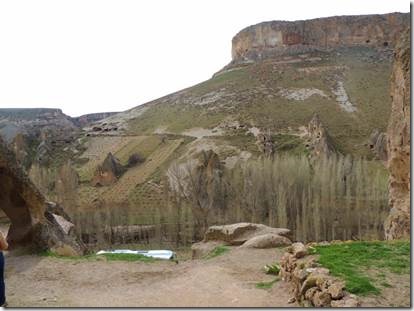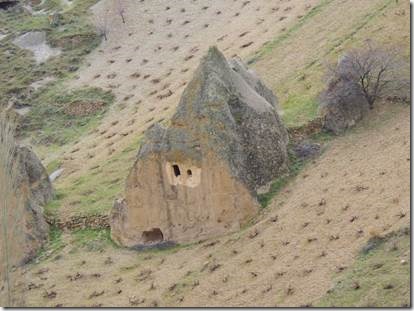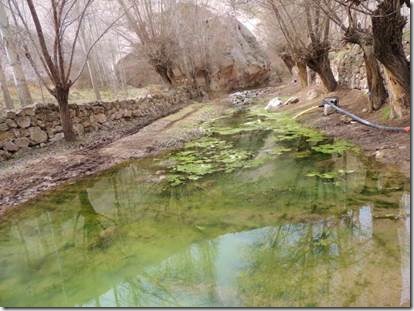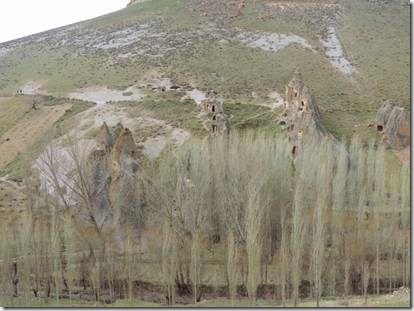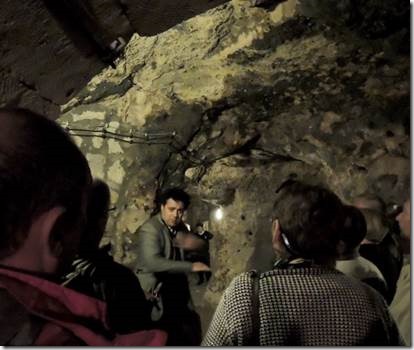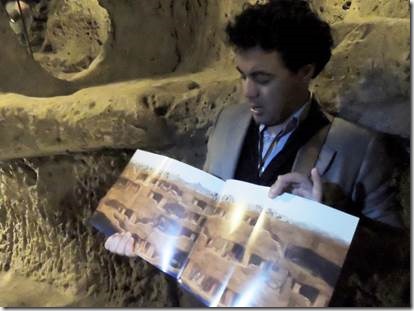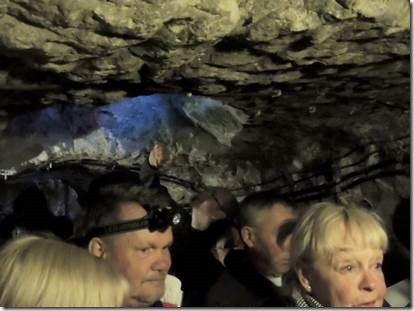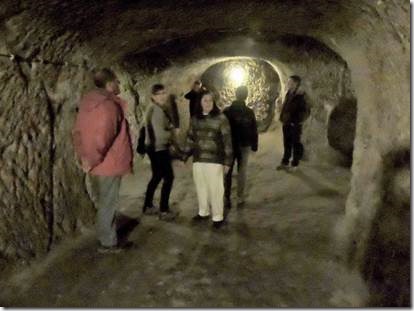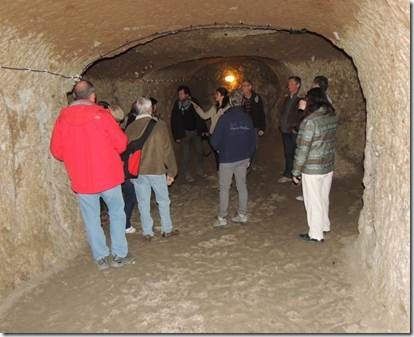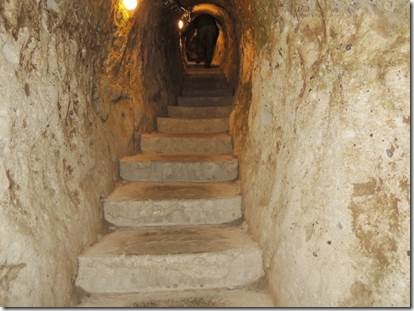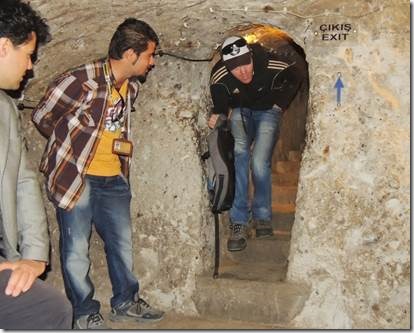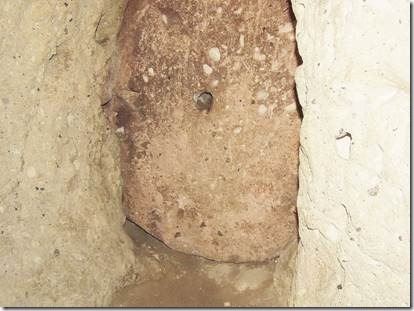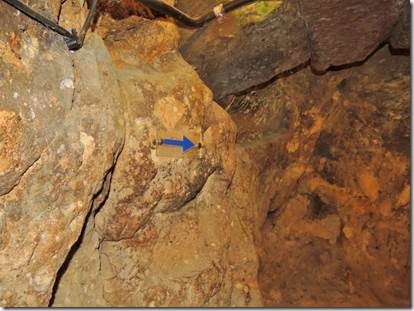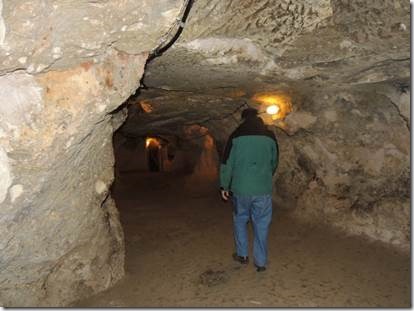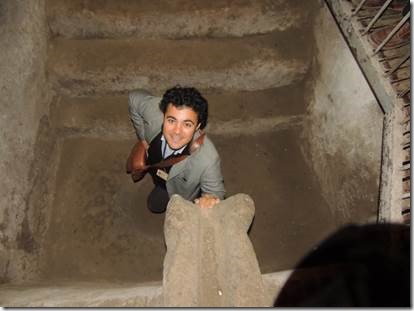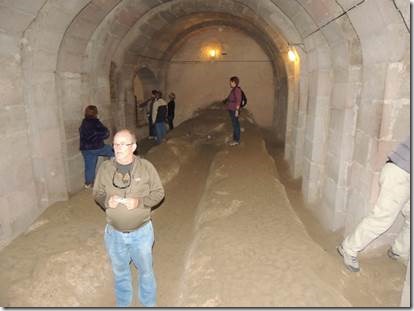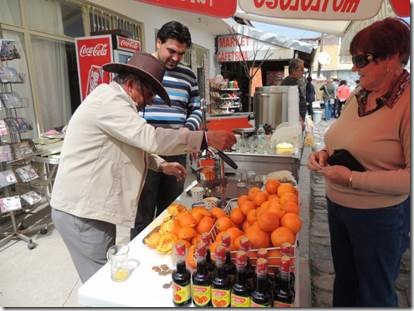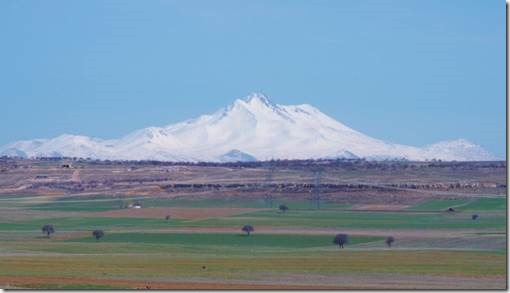Merhaba,
This is part one of our visit to Soğanlı Valley. I’ve read blogs offering different explanations for the meaning of Soğanlı. One says it mean onions (it does) which was then supposed to have caused a sultan who loved Tuips to name it Soğanlı do not ask me why. Another blog said Soğanlı was a variation on the word that means “last to be conquered” because it was between two steep cliffs. Neither of my books talks explains the origin of the name. Another question is the translation of Karabaş Kilisesi, one of the churches and why it was called that at all. One does need to have a good library at hand!
Ru
Ps next email I wear the green hat!
Soğanlı Valley
This was one of my favorite stops on our trip! I really recommend it to anyone who hasn’t been to Cappadocia but might be planning a visit.
“Soğanlı Valleys of southern Cappadocia are great if you want to do some Cappadocian cave-church exploring off the beaten path. Yes, the Göreme Valley has the best-preserved painted churches, but it’s also always busy with large groups. The Zelve Valley has wonderful weird volcanic topography, but it’s also crowded most of the time. The Upper and Lower Soğanlı valleys of southern Cappadocia, about 36 km (22 miles) south of Mustafapaşa, are much less visited. In the Soğanlı (soh-AHN-luh) valleys you may have the hiking trails, churches and weird dovecotes to yourself. You can have fun exploring on your own throughout several valleys, and really get off the beaten path. Not only that, but there is a real traditional Turkish village at Soğanlı, with people living (mostly) as they have for centuries.
Tourism has intruded to the point where there are several serviceable restaurants, and local women hand-make "Soğanlı dolls" for the tourist trade, but Soğanlı is still a real Turkish place.
The Tokalı Kilise (Buckle Church) is up a steep, slippery, much-eroded stairway cut into the rock, on the right as you approach the village. Clamber up at your own risk. The churches are badly ruined, but the climb is memorable. The Gök Kilise (Sky-Blue Church) is to the left on the other side of the stream, indicated by a sign……..
In the northern valley, see the Karabaş Kilisesi (Black Head Church), next to the monks’ refectory, and the Yılanlı Kilise (Church with a Serpent) at the head of the valley.
Cross the valley near the Yilanli Kilise to reach the Kubbeli Kilise (Church with a Dome) and Saklı Kilise (Hidden Church). You’ll have recognized the cylindrical dome of the Kubbeli as you walked up the other side of the valley. The Hidden Church is indeed hidden: not in evidence until you approach it.
In the other valley, look for the Geyikli Kilise (Church with Deer), with another refectory (the Byzantine monks here lived alone, but shared meals together). The Tahtalı Kilise (Church with Doves), also called the Church of St Barbara, has some of the best-preserved decoration.
The dovecotes you see in and around Soğanlı were built by the monks to accommodate the pigeons valued for their guano (poop). Caves were hollowed behind rock faces, then small holes carved through the wall to admit the doves. The borders of the holes are painted white to attract the birds, but the facing around each hole is smooth so there is no place to alight. The birds enter the holes to find a lattice of sticks on which to perch. They sleep there, and defecate, and the monks collected their guano for use in fertilizing their grapevines, which produced sweet grapes for making wine.
Plan to spend at least 90 minutes (bare minimum) at Soğanlı, preferably three hours or half a day. The walking is enjoyable. This is not a place to run through and check off churches from a list, but rather a place to enjoy hiking and exploring on your own.
Bring water and snacks. Drinks and food are available in the restaurants as well”.
http://www.turkeytravelplanner.com/
|
The white circles painted around the openings in the rock are the dovecotes mentioned above. |
|
An alien version of Edvard Munch’s The Scream |
|
Karabaş Kilisesi (Black Head Church ) The Karabas Kilise is the first church that you reach after entering the Upper Soğanlı Valley. We assume that it got its nickname, the Black Head Church, due to the dark skin colors used in its frescoes, which are still mostly intact, but with definite signs of wear and some vandalism. In addition to the church, you can explore the adjacent caves where the monks and priests lived and worked. http://www.virtualtourist.com/ |
|
Climbing up to the church |
|
Black hat or halo for sure |
|
“The Karabaṣi (Black Hat) …. Is covered in paintings showing the life of Christ, with Gabriel and various saints. A pigeon in the fresco reflects the importance of pigeons to the monks…” lonely planet Turkey Our guide Taṣ made a point of the “black faces” to indicate the acceptance of those with dark skins. Fodor’s translates Karabaṣi as black hat but my dictionary translates bas as head. I once read that some paints turn black with time so who knows if the color was even supposed to be black… “The blackened faces of the images are a result of the oxidation of the natural elements in the paint material that was used. It was these “blackened heads” that led the church to being named Karabaṣ, “Black Head.” It bears the inscription of 1060 as being the date of its construction.” http://www.quiteguide.com/ is the site of a Turkish Tour Guide but I still don’t know the correct answer. One could study a great deal about one little bit of one small place. |
|
More recent additions of graffiti. |
|
View from the church door to what must be the monks’ refectory. |
|
Just outside the church looking across to the other side of the valley. |
|
Baby rhino related to Randal Rhino? Cappadocia is a great place to let your imagination run wild. |
|
The Soḡanli River separating the sides of the valley was narrow enough at one place for us to cross. |
|
Taṣ said it was a tradition for families to plant poplar trees at the birth of a son. |

